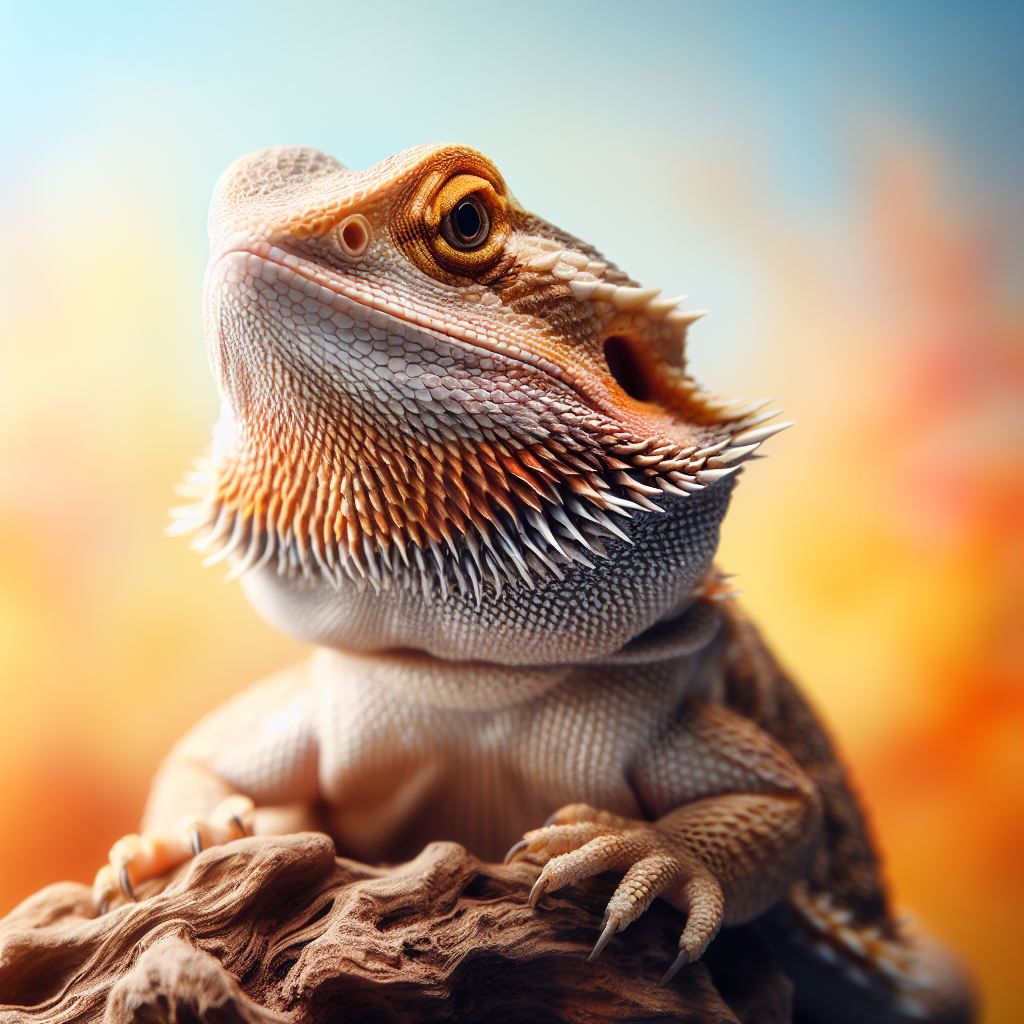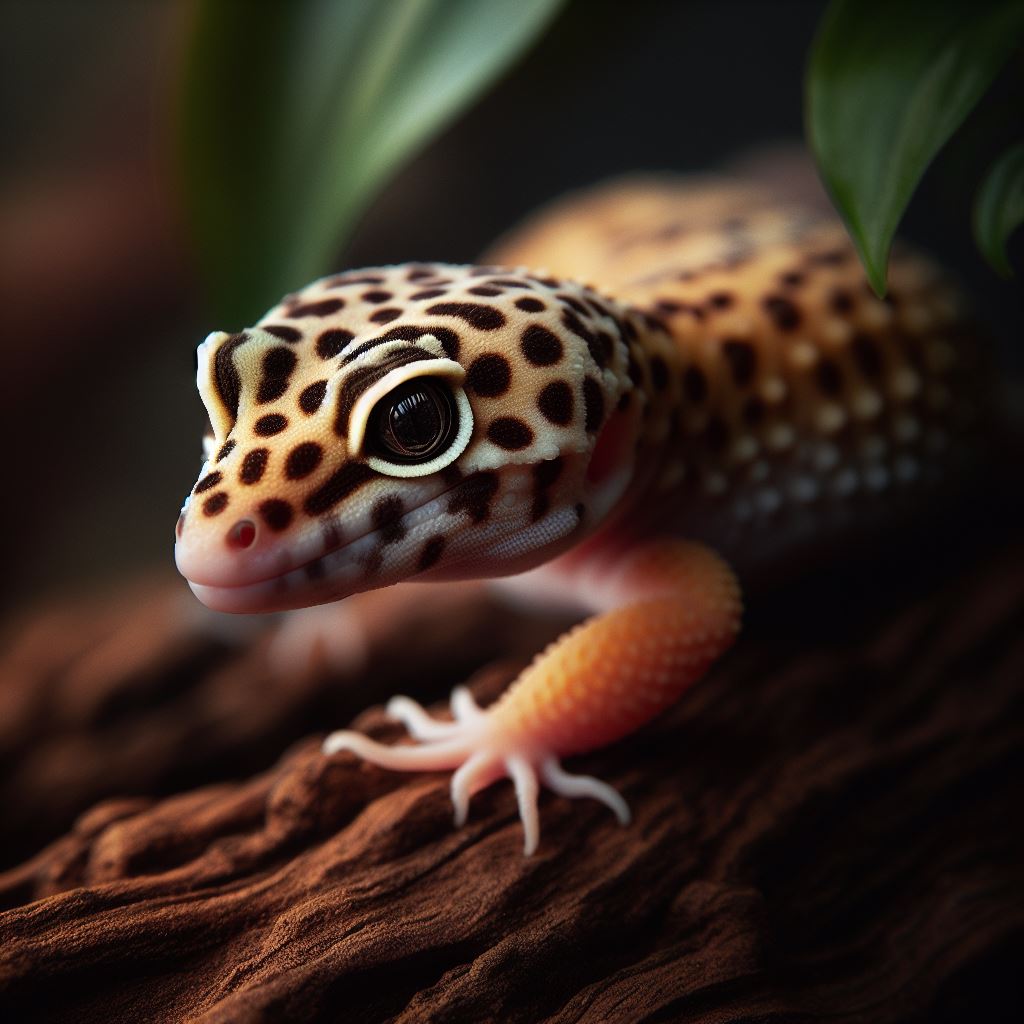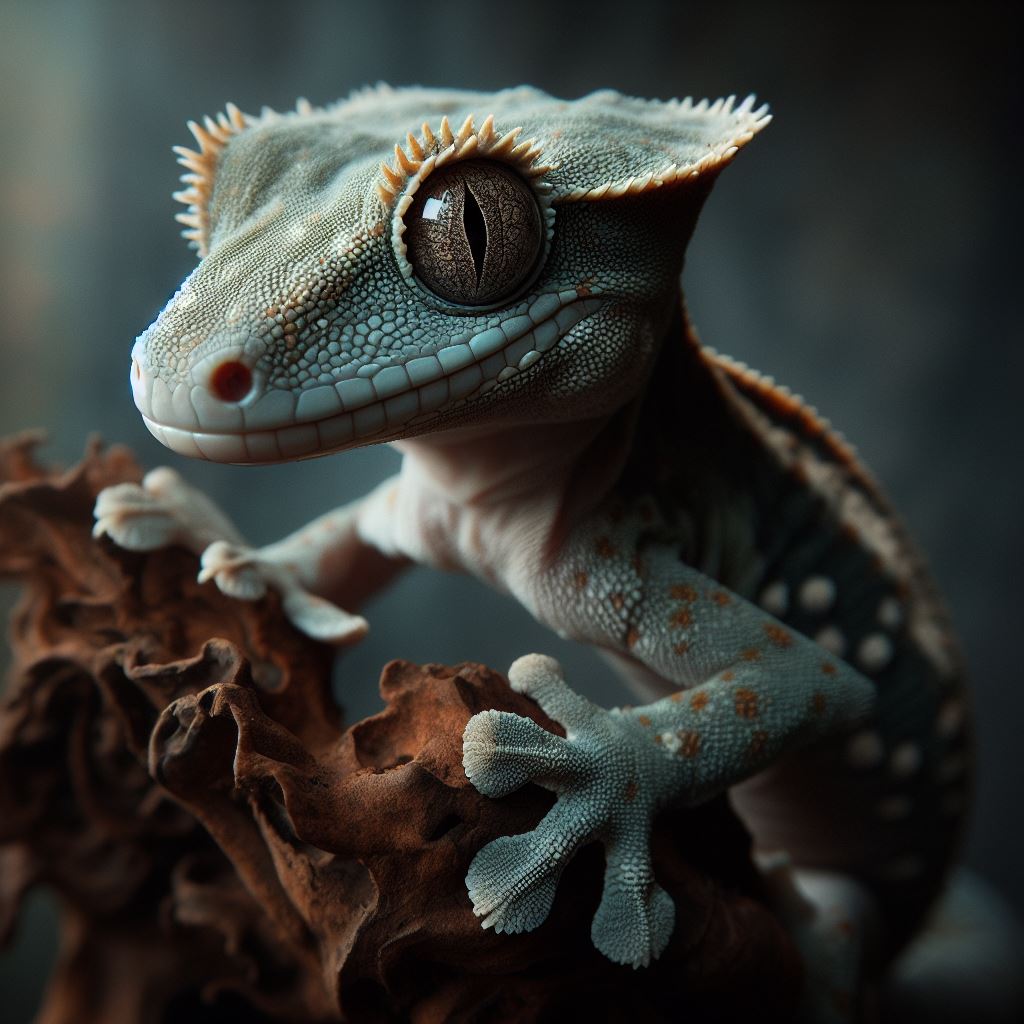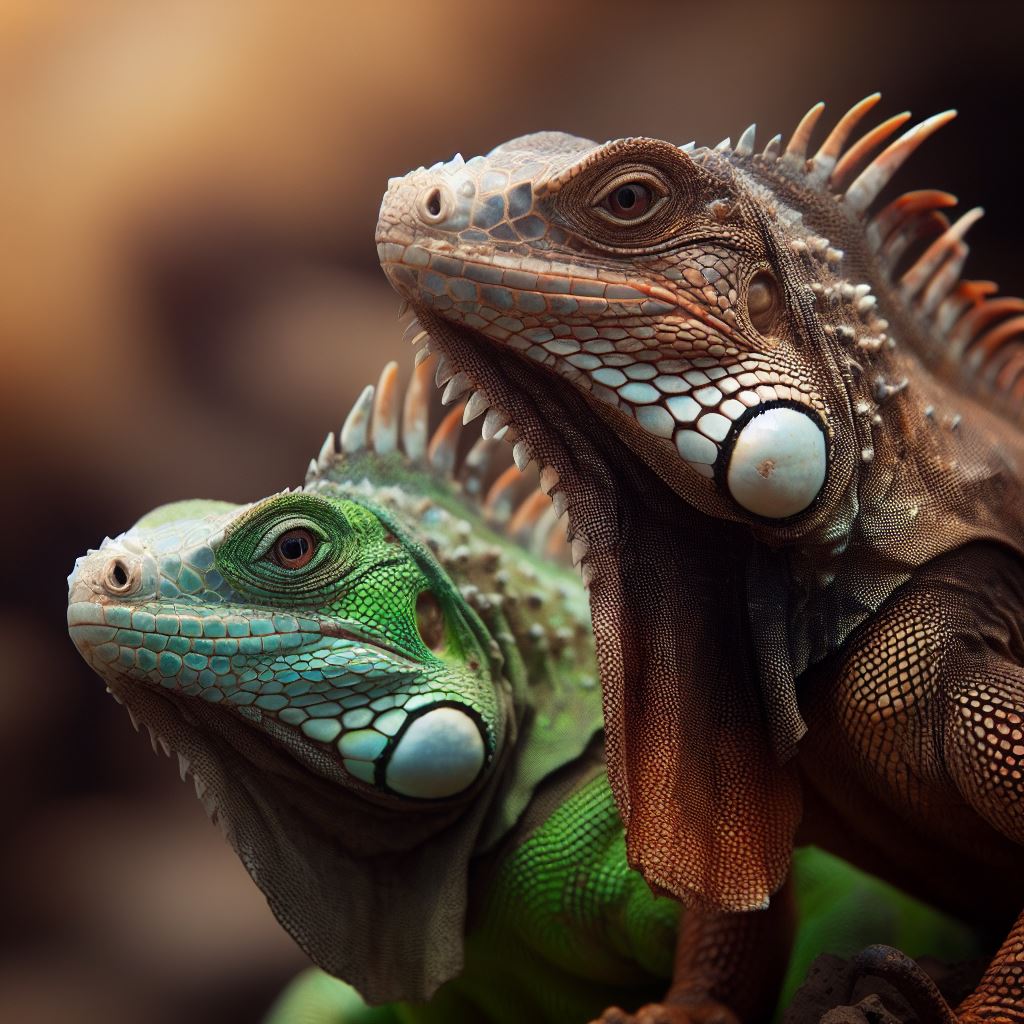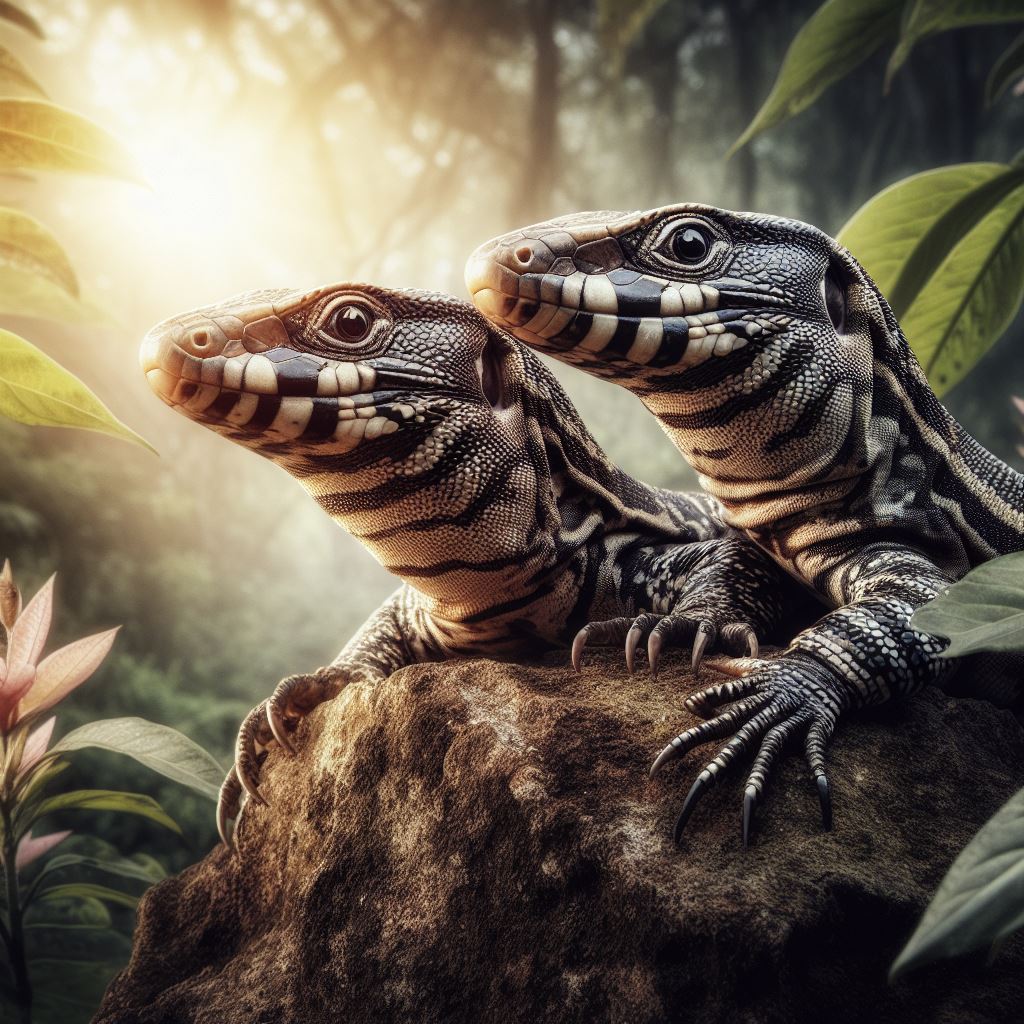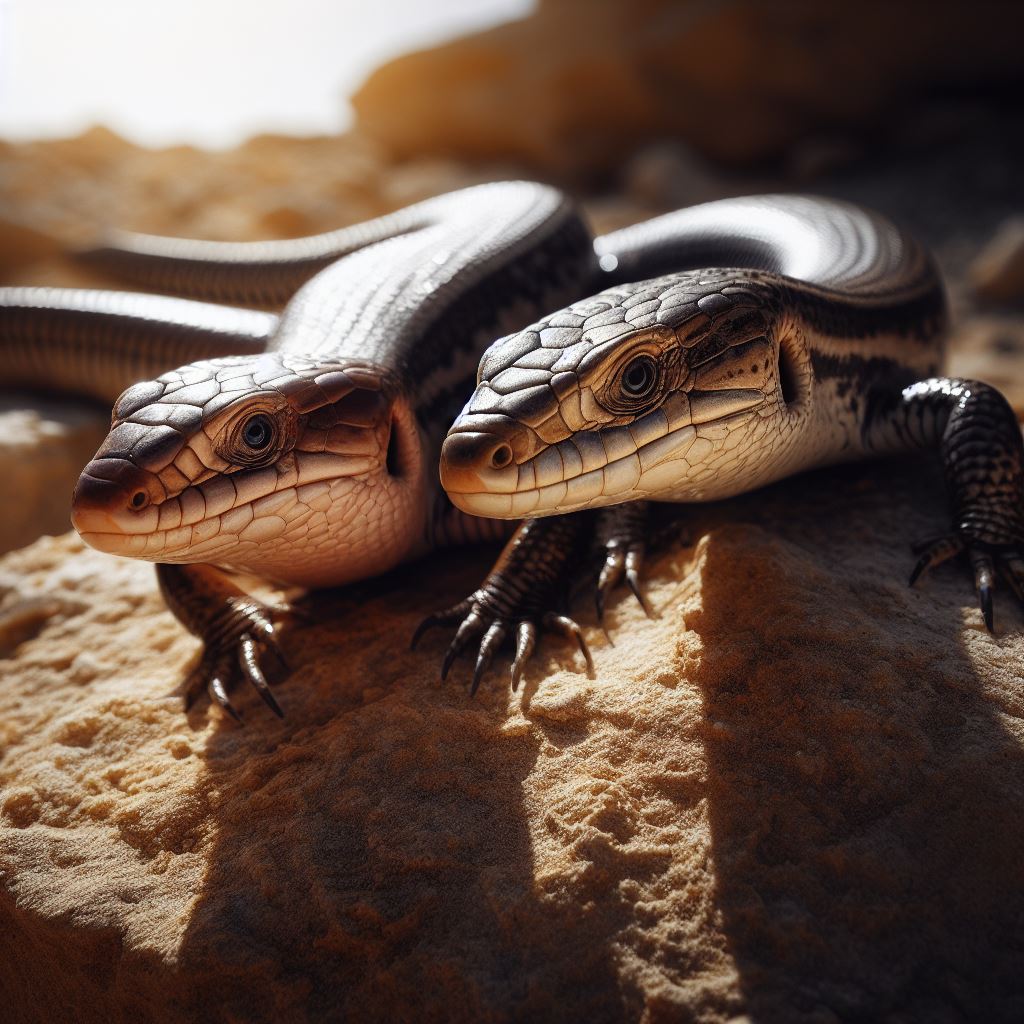Walk into the mesmerizing world of Bearded Dragons, the charming reptiles that have enraptured pet enthusiasts with their individuality and striking appearances. In this comprehensive guide, we will delve into the mysteries of Bearded Dragons, understanding their unique biology and behaviors, exploring the variety in their morphs, and immersing ourselves in the essential aspects of caring for them as beloved companions. Whether you’re an experienced herpetologist or a newcomer in the realm of reptile companionship, this guide offers a journey to fully embrace the captivating charm of Bearded Dragons.
Bearded Dragons: A Kaleidoscope of Colors
Anatomy and Unique Features of Bearded Dragons
Bearded Dragons, with their robust bodies, rough skin, and iconic beard-like structures under their throats, epitomize the resilience and adaptability of reptilian species. Their keen sense of sight and ability to change skin color for thermoregulation make them fascinating subjects for study. Understanding their specialized features, such as the structure of their scales and their unique digestive systems, provides valuable insights into their ecological adaptations.
The Family Agamidae: Exploring Bearded Dragons’ Taxonomy and Diversity
Belonging to the family Agamidae, Bearded Dragons encompass a diverse range of species found in various habitats across Australia. Exploring their taxonomy reveals a captivating array of traits, each uniquely adapted to its environment. From arid deserts to woodlands, their evolutionary journey mirrors the complexity of the ecosystems they inhabit.
Bearded Dragon Varieties
Bearded dragons, scientifically known as Pogona, are popular reptile pets known for their friendly demeanor and unique appearance. Over the years, breeders have developed various morphs, which are different genetic mutations that result in a wide array of colors and patterns.
- Normal/Wild Type: The wild-type bearded dragon typically has a brownish-grey color with patterns that help them camouflage in their natural habitat.
- Citrus: Citrus bearded dragons exhibit vibrant yellow, orange, or even red colors.
- Hypo: Hypomelanistic bearded dragons have reduced melanin, which results in lighter colors.
- Translucent: Translucent bearded dragons have semi-transparent scales. When they are held up to light, their skin appears somewhat see-through.
- Leatherback: Leatherback bearded dragons have smooth, soft scales instead of the usual spiky appearance.
- Dunner: Dunner bearded dragons have a distinct pattern caused by a genetic mutation.
- Witblits: Witblits bearded dragons are completely lacking in dark pigmentation.
- Zero: Zero bearded dragons lack dark pigments, resulting in a nearly white or very light appearance.
- Silkback/Silk: Silkback bearded dragons lack scales, giving them a smooth, silky appearance.
- Paradox: Paradox bearded dragons exhibit random patches of unexpected colors or patterns, making each unique.
- Red/Gold: Red or gold bearded dragons have a dominant red or gold coloration.
- Tiger: Tiger bearded dragons have bold, dark stripes or bands across their body, resembling the pattern of a tiger.
These morphs, along with various combinations and patterns, create a kaleidoscope of colors in the bearded dragon world, making them highly sought after by reptile enthusiasts and pet owners alike. Keep in mind that responsible breeding practices and proper care are crucial to ensuring the health and well-being of these unique reptiles.
Bearded Dragon Care: Building a Home
Enclosure Design: Mimicking Natural Habitats
Designing a bearded dragon enclosure that mimics their natural habitat is crucial for their overall well-being, health, and happiness. In the wild, bearded dragons inhabit arid and semi-arid regions of Australia, so their enclosure should replicate these conditions as closely as possible. Here are some tips on how to design an enclosure that mimics their natural habitat:
1. Size and Space:
- Provide a spacious enclosure to allow for movement. A 40-gallon tank is a minimum, but larger enclosures are always better.
- Consider a custom-built enclosure for more space and better customization.
2. Substrate:
- Use a substrate that mimics their natural environment, such as reptile carpet, paper towels, or a mix of organic topsoil and play sand. Avoid substrates that can be ingested and cause impaction.
3. Temperature and Lighting:
- Provide a basking spot with a heat lamp that reaches around 100-110°F (37-43°C).
- Use a UVB lamp to provide essential ultraviolet light, necessary for calcium metabolism.
- Create a temperature gradient in the enclosure, with a warm side and a cooler side to allow the dragon to regulate its body temperature.
4. Hiding Spots and Climbing Structures:
- Add rocks, branches, and logs for climbing and basking.
- Provide multiple hiding spots using reptile caves or half logs. Bearded dragons need a sense of security.
5. Plants and Decor:
- Use artificial plants that are safe for reptiles. These provide a natural feel and enrich the enclosure.
- Decorate the enclosure with rocks and branches, creating a desert-like landscape.
- Avoid sharp or small objects that could harm the dragon.
6. Diet and Water:
- Offer a variety of insects (crickets, mealworms, roaches) and fresh vegetables (collard greens, dandelion greens, bell peppers) to mimic their diverse diet.
- Provide a shallow dish of fresh water. Bearded dragons might not drink from it, but it helps maintain humidity.
7. Hygiene:
- Keep the enclosure clean. Spot clean daily and do a thorough cleaning regularly.
- Disinfect the enclosure periodically to prevent the growth of harmful bacteria.
8. Environmental Enrichment:
- Provide mental stimulation with proper hiding spots, climbing structures, and toys.
- Occasionally rearrange the décor to provide a change in the environment.
9. Monitoring and Interaction:
- Monitor your dragon’s behavior. If it’s hiding excessively, it might be stressed or ill.
- Interact with your dragon regularly, but handle it gently and respect its boundaries.
By creating an environment that mirrors their natural habitat, you’ll ensure your bearded dragon lives a healthy and content life. Regular research and observation of your pet will help you make necessary adjustments to the enclosure to cater to its specific needs and preferences.
Bearded Dragon Behavior: Understanding and Interaction
Bearded dragons, while not social animals in the same way that dogs or some primates are, exhibit certain social behaviors and communicate through various means. Here are some key aspects of their social behaviors and communication:
Social Behaviors:
- Tolerance: Bearded dragons can often tolerate being housed together, especially if they are raised together from a young age. However, it’s crucial to provide enough space, hiding spots, and resources to prevent aggression.
- Territorial Behavior: Male bearded dragons can be territorial, especially during the breeding season. They might display dominant behaviors, such as head bobbing and arm waving, to establish dominance and avoid physical confrontation.
- Hierarchy: When multiple dragons are kept together, they may establish a hierarchy. Dominant dragons might assert their authority through body language and vocalizations.
- Mating Rituals: During the mating season, male bearded dragons exhibit courtship behaviors, including head bobbing, arm waving, and even changing colors. Female bearded dragons might display receptive behaviors if they are interested in mating.
Communication:
- Head Bobbing: Bearded dragons, especially males, engage in head bobbing to communicate. It can indicate dominance, submission, or a mating attempt, depending on the context.
- Arm Waving: This is a submissive behavior. A submissive bearded dragon waves one of its front arms slowly to show deference to a more dominant individual.
- Color Changes: Bearded dragons can change colors based on their mood, temperature, and health. Bright, vibrant colors often indicate a content or excited dragon, while darker colors might signify stress or illness.
- Tail Twitching: Rapid tail twitching can be a sign of agitation or excitement.
- Hissing: Bearded dragons may hiss if they feel threatened. It’s a warning sign to back off.
- Puffing Up: Bearded dragons can puff up their bodies to appear larger when they feel threatened. This is a defensive behavior.
- Gape Threat: When a bearded dragon opens its mouth wide, displaying the inside of its mouth, it’s a threat display indicating aggression. It’s often accompanied by hissing.
- Licking: Bearded dragons might lick to explore their environment or to communicate submission to a more dominant dragon.
Understanding these behaviors and signals is essential for bearded dragon owners. It helps in creating an environment where your pet feels secure and can reduce stress, promoting their overall well-being. Always observe your pet’s behavior closely to ensure it is healthy and comfortable in its surroundings.
Handling and Taming: Building Trust with Bearded Dragons
Building trust with your bearded dragon is essential for their well-being and your ability to handle them comfortably. Here are some steps and tips for handling and taming your bearded dragon:
1. Start Slowly:
- If your bearded dragon is new, give it a few days to settle into its enclosure before attempting to handle it. Let it get used to its new environment and surroundings.
2. Hand Presence:
- Place your hand in the enclosure regularly so your dragon gets used to your scent and presence. Allow it to come to you; don’t force it.
3. Be Calm and Gentle:
- Move slowly and speak softly around your bearded dragon. Sudden movements and loud noises can stress them out.
4. Positive Reinforcement:
- Offer treats (small pieces of their favorite food) when your dragon approaches your hand. This positive reinforcement encourages them to associate your presence with something pleasant.
5. Frequent, Short Sessions:
- Start with short handling sessions, maybe just a minute or two at a time, several times a day. Gradually increase the duration as your dragon becomes more comfortable.
6. Proper Handling Technique:
- When you pick up your bearded dragon, scoop it up gently from underneath, supporting its body with your hands. Avoid grabbing it from above, which might make it feel threatened.
7. Respect Boundaries:
- Respect your dragon’s boundaries. If it shows signs of stress (such as hissing, puffing up, or trying to escape), put it back in its enclosure.
8. Handling with Confidence:
- Be confident but gentle when handling your dragon. They can sense your confidence, which can help them feel more secure.
9. Regular Interaction:
- Handle your bearded dragon regularly to maintain the bond. Regular interactions will help in building trust over time.
10. Create a Safe Environment:
- Choose a quiet, calm environment for handling. Avoid places with a lot of noise and activity.
11. Be Patient:
- Every bearded dragon is different. Some may become tame quickly, while others might take more time. Patience is key to building trust.
12. Watch for Body Language:
- Pay attention to your dragon’s body language. If it flattens its body or opens its mouth wide, it might be stressed. Always be aware of its comfort level.
Remember, every bearded dragon has its unique personality, and some individuals might take longer to tame than others. Be patient, consistent, and gentle in your interactions, and your bearded dragon will likely become more comfortable with you over time. Building trust is a gradual process, so don’t rush it, and always prioritize your pet’s comfort and well-being
Health Care and Enrichment
Regular health monitoring is crucial to ensuring the well-being of your bearded dragon. By observing their behavior, appearance, and habitat conditions, you can catch potential health issues early. Here’s a guide to common health issues and how to monitor your bearded dragon’s health:
Regular Observations:
- Behavior: Watch for changes in behavior, such as lethargy, loss of appetite, or unusual aggression.
- Eating Patterns: Be aware of changes in eating habits, as a sudden loss of appetite can be a sign of illness.
- Body Condition: Check for weight loss, bloating, or any unusual lumps or bumps.
- Skin and Scales: Look for signs of shedding problems, dry skin, or color changes.
- Eyes and Nose: Ensure their eyes are clear and free of discharge. Check for any nasal discharge, which can indicate a respiratory issue.
- Oral Health: Check for mouth rot (signs include swelling, redness, or discharge) and ensure there are no retained sheddings on the toes or tail.
- Vent Area: Make sure the vent area (cloaca) is clean and free of any discharge.
Common Health Issues:
- Metabolic Bone Disease (MBD): Caused by a lack of calcium, UVB light, or improper diet. Signs include lethargy, twitching, or deformed limbs.
- Respiratory Infections: Symptoms include wheezing, open-mouth breathing, and nasal discharge.
- Parasites: Internal parasites (worms) and external parasites (mites) can affect bearded dragons. Symptoms may include weight loss, bloating, or visible parasites.
- Impaction: Caused by ingesting substrate or foreign objects, leading to difficulty defecating. Signs include lethargy and a distended abdomen.
- Yellow Fungus: A fungal infection that affects the skin, causing yellow patches. It’s often a result of poor husbandry.
- Tail Rot: Usually caused by a bacterial infection. Signs include blackening or necrosis at the tail tip.
Veterinary Care:
- Regular Check-ups: Schedule regular check-ups with a reptile-savvy veterinarian, even if your dragon appears healthy. Prevention is key.
- Prompt Attention: If you notice any signs of illness, seek veterinary care promptly. Reptiles often hide illnesses until they are quite advanced.
Habitat Maintenance:
- Cleanliness: Maintain a clean enclosure. Regularly remove uneaten food, clean the water dish, and spot clean feces to prevent bacterial growth.
- Proper Lighting and Heating: Ensure the UVB and heat lamps are providing adequate light and heat according to your dragon’s needs.
By staying vigilant and providing proper care, you can help ensure your bearded dragon lives a healthy and happy life. Regular observation, a balanced diet, appropriate habitat conditions, and prompt veterinary care are the keys to keeping your pet in good health.
Conclusion
Bearded Dragons, with their diverse morphs and intriguing behaviors, stand as captivating companions for those enthralled by the reptilian world. By comprehending their natural behaviors, habitat requirements, and dietary intricacies, you can create an environment where these extraordinary creatures flourish. Responsible pet ownership is not merely a choice but a commitment—one that ensures the flourishing existence of Bearded Dragons and, indeed, all reptile species. Embrace the opportunity to welcome these majestic beings into your life and embark on a fulfilling journey of companionship and conservation.

